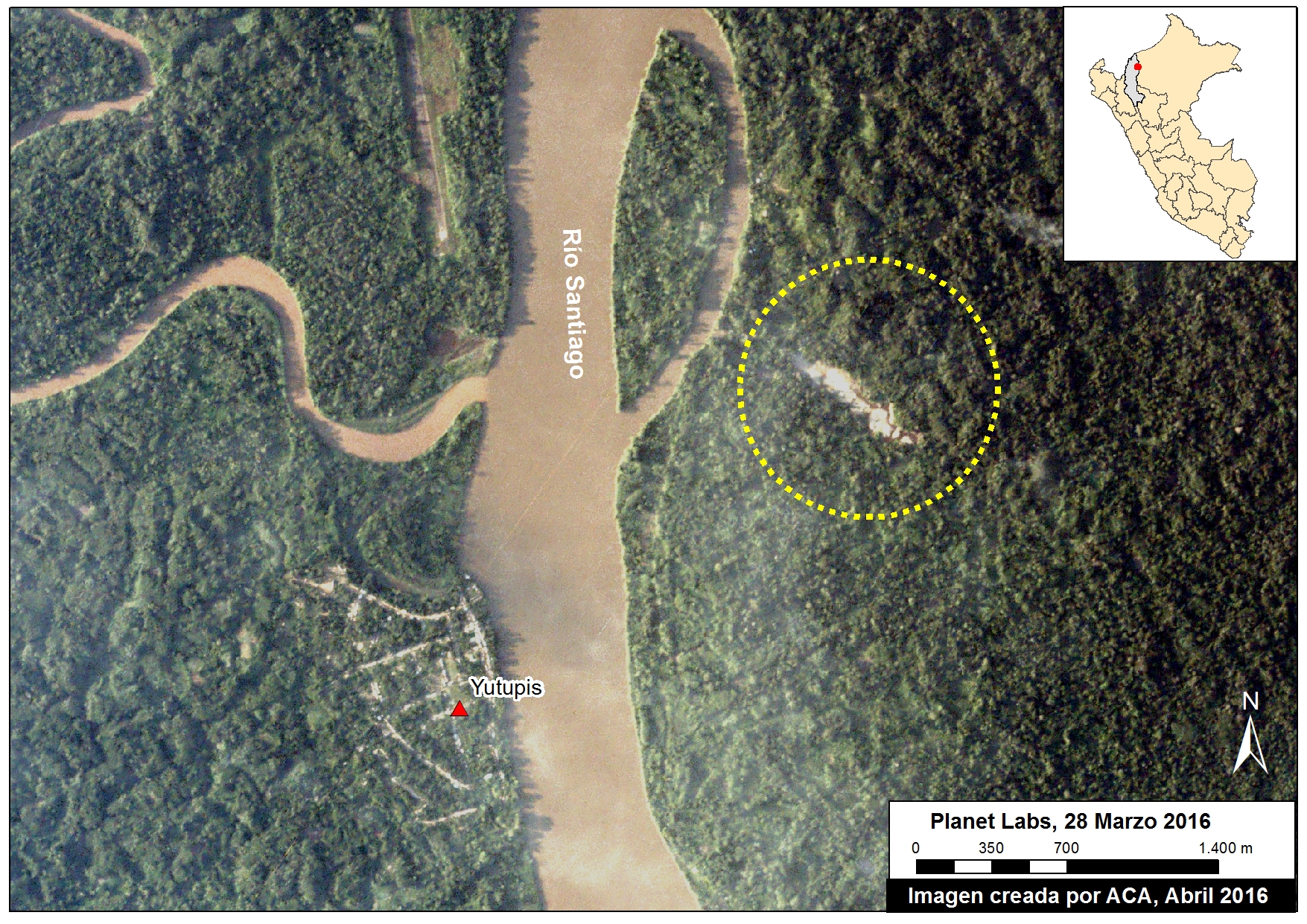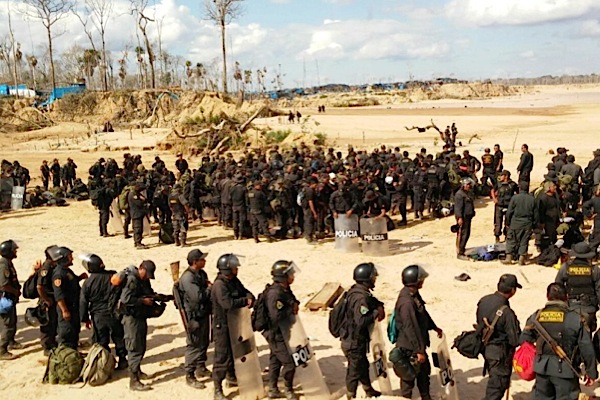Peru losing its battle against illegal gold mining
Peruvian authorities are losing their battle against an army of illegal gold miners who have carved a toxic path through the country's rainforest, one of the most biologically diverse places on earth.
Total forest loss to date along the Santiago River is 8 hectares or the equivalent to 12 soccer fields.According to an in-depth report by The New York Times, a force of marines and rangers sent in the past days to raid the Tambopata reserve, in the country's southern Amazon, has already been outnumbered. And the devastated areas keep growing.
Recently released satellite images show widespread damage along a new area by the Santiago River, equivalent in size to 12 soccer fields. The once pristine waters of the stream have already turned murky brown, partly due to the fact that illegal miners use high-pressure water hoses to break down the soil.


High-resolution image of the newly deforested area due to mining activity along the Santiago River (see yellow circle). The total forest loss to date is 8 hectares (20 acres). (Images courtesy of MAAP.org -Monitoring the Andean Amazon Project | Satellite images: (C)DigitalGlobe 2016)
They also use mercury, which binds with gold and forms an amalgam. The process not only exposes them to the toxic substance and its vapours, but it's also contaminating the land and inadvertently poisoning food chains in the process.
Despite the government's efforts to tighten the screws on illegal mining, covert gold production in the South American nation has increased fivefold since 2012, and it is estimated to provide 100,000 direct jobs in the country, 40% of which are in the Madre de Dios region, located in southern Peru.


In July last year, armed police swooped in to Peru's Amazon basin, burning down an entire town that was home to a vast illegal gold operation.
The situation is mirrored in dozens of the countries, where gold is similarly mined and where the desperately poor often end up working in risky conditions.
In addition, neighbouring countries, such as Ecuador, have become a major transit hub for illegal Peruvian gold exported to the US, according to case files obtained by local newspaper El Comercio (in Spanish).
Peru is the world's sixth largest gold producer and the top producing nation in Latin America, but an estimated 20% of its annual output is of unknown origin.